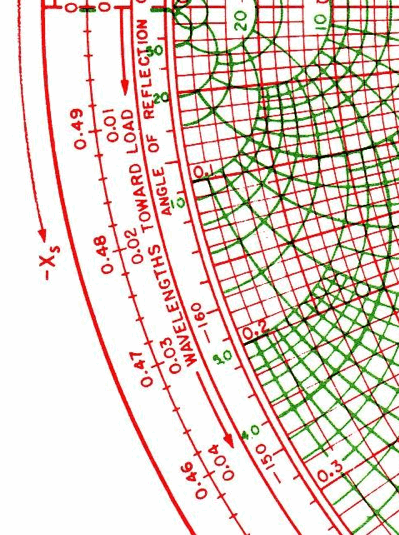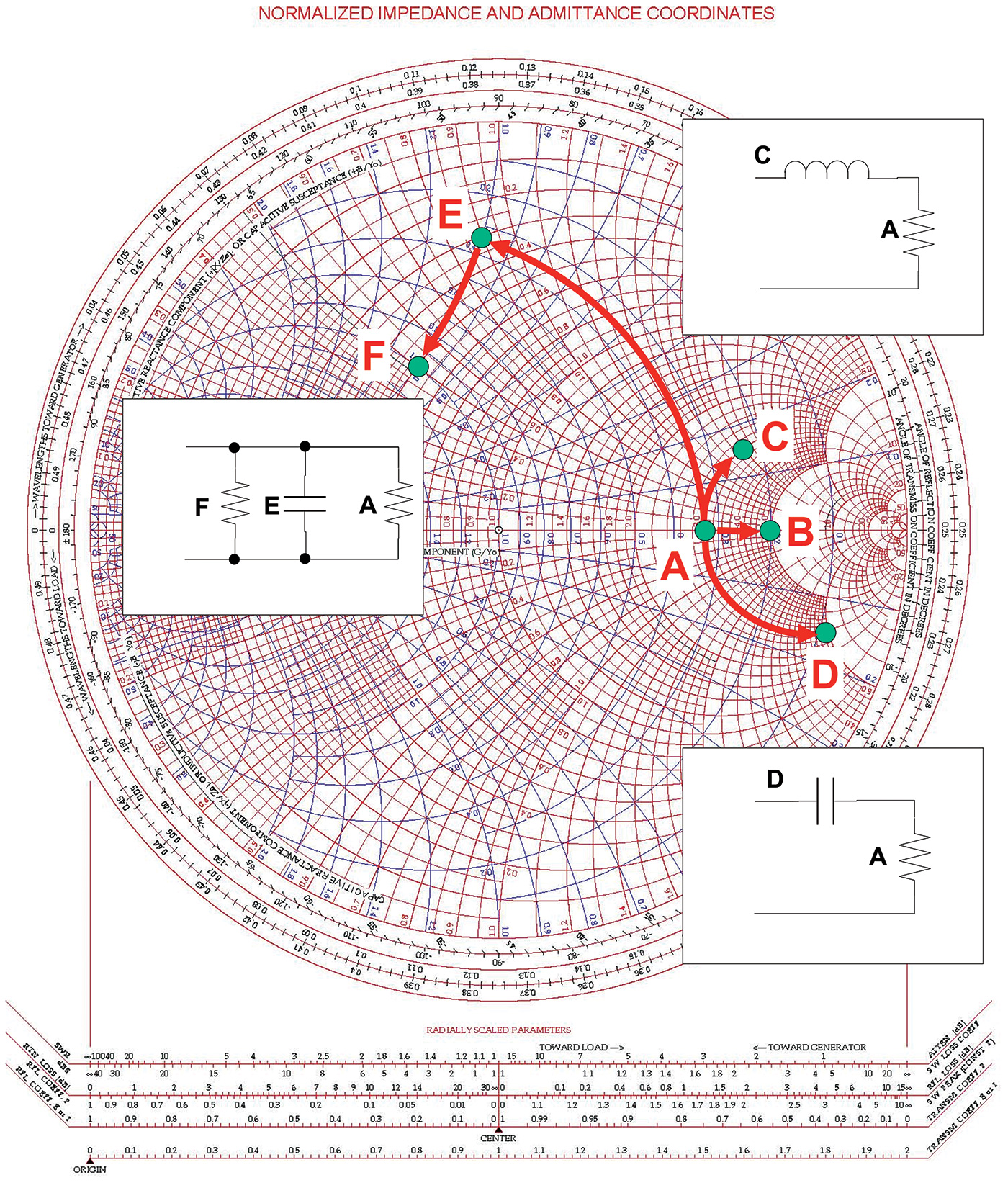

The next article will focus on the resistance and reactance circles, and their relation to the location of normalized load impedance on the Smith Chart. We refer to this circle as the reactance circle. We refer to this circle as the resistance circle. This circle has a radius b and is centered at ( x, y ) = ( h, k ).ĭescribes a circle in the Γ r Γ i plane. Which is an equation describing a circle in the xy plane.


Multiplying both sides by the denominator of the right-hand side, we obtainĪdding (1 + 1/ x 2 L ) to both sides results inĮquations (3.23) and (3.29) have the form of Multiplying both sides by the denominator of the right-hand side, we obtain (3.8) resulting inĮquating the real and imaginary parts we getįor now, let’s focus on Eq. This result can be substituted for the right-hand side of Eq. Multiplying out the terms in the numerator and grouping the real and imaginary part gives Multiplying numerator and denominator by the complex conjugate of the denominator we get (3.5) we obtainįor now, let’s focus on the right-hand side (RHS) of Eq. Where r L is the normalized load resistance and x L is the normalized load reactance. Multiplying both sides by the denominator of the right-hand side, we obtainīoth the normalized load impedance and the load reflection coefficient are complex quantities and a such they can be expressed in terms of their real and imaginary parts. This equation can be solved for the normalized load impedance in terms of the load reflection coefficient as follows. Load Reflection Coefficient and Normalized Load ImpedanceĮquation (2.4) expresses the load reflection coefficient in term of the normalized load impedance. Smith Chart is based on the plot of the load reflection coefficient utilizing this normalized load impedance, as explained next. Where the small letter L denotes the normalized load impedance, i.e., L = L / Z C. (1.1) and divide the numerator and denominator by the characteristic impedance of the line, Z C. Let’s return to the load reflection coefficient given by Eq.

Shown in Figure 4 is also a unit circle, which sets the boundary for all the points representing a passive load reflection coefficient. The magnitude of 0 (center of the complex plane) corresponds to a matched load, the magnitude of 1 with the angle of 0 º represents an open circuit, while the magnitude of 1 with the angle of 180 º represents a short circuit. The angle is measured counterclockwise from the right-hand side of the horizontal Γ r axis.įor passive loads, the magnitude of the load reflection coefficient is always The magnitude of the load reflection coefficient is plotted as a directed line segment from the center of the plane. Figure 4: Load reflection coefficient and the complex Γ plane


 0 kommentar(er)
0 kommentar(er)
